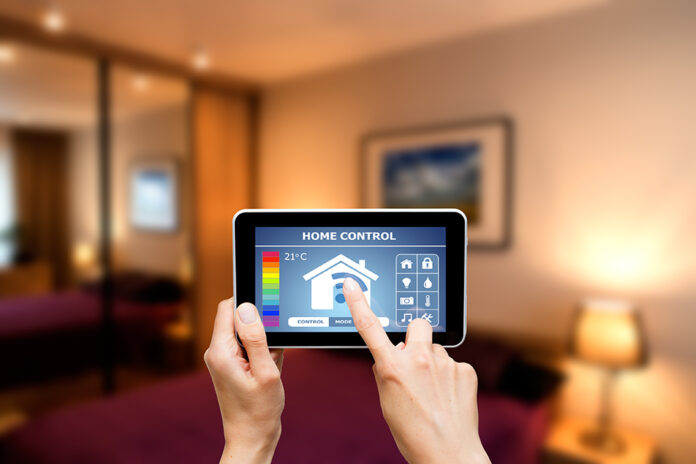Over the past decade, thermostats have changed a lot. Earlier, people used to adjust the temperature on the traditional Thermostat manually, but with time and advancement in technology, the newer Thermostat or the smart Thermostat can work independently. So, people won’t have to worry about managing the temperature on the Thermostat every time. In the standard Thermostat used earlier, people set the schedule with the aid of the buttons provided by the Thermostat, which was quite difficult.
So, with the introduction of the smart Thermostat, it has now become easy to manage and schedule, so let’s explore more about this smart Thermostat. So, could you read its details before buying and installing a new thermostat? This article will provide all the details related to a smart thermostat. And also how it is different from the standard thermostats.
What is Smart Thermostat?
Smart thermostats control or manage the temperature inside the room by managing the heating and cooling devices Present inside the house. People can easily adjust the temperature using the smart Thermostat on their smartphones, tablets, or even smart speakers. The only thing that is needed is a WIFI connection.
Now the main question that comes to mind is why we call it “Smart’. The smart refers to the Thermostat’s ability to learn the home’s behaviour and habit. Then it adjusts the temperature according to the needs of the people automatically. Many algorithms are associated with the smart Thermostat’s AI technology, which helps it calculate the optimum schedule without using direct input. This maximises comfort level as well as efficiency.
In what ways is the smart Thermostat differ from the other standard Thermostat?
The reason for the huge popularity of the smart Thermostat is its aesthetic design and the Capability to operate easily. Also, it gets connected to the heating and cooling device easily. In contrast, the standard Thermostat is operated manually. Here are the four major differences between standard and smart thermostats.
- Programmable: The standard thermostats are manually operated to adjust the temperature. Whereas on the other hand Hindi smart thermostat, you can schedule the temperature setting going to your needs. This causes the HVAC system to run only at the scheduled time whenever people want it to work. This will reduce energy consumption, thus saving you money on the power bill. The HVAC system runs off only when you are not at home. Once you come back, it maintains the ideal temperature again.
- Customisable: One of the main problems is that when you schedule the temperature, it gets scheduled, and the Thermostat works accordingly. But if you want to change the timing then, is it possible to do so? With a manual thermostat, you won’t be able to change the temperature setting. It is one of the major drawbacks of the standard Thermostat. But with the smart Thermostat, you can comfortably change the temperature from anywhere by using the smart thermostat mobile application.
- Intelligent: Manually changing the temperature is not an easy thing to do. But, a smart thermostat can change the temperature with the sensors. Once the sensor detects the pattern, then it protects the temperature on its own that the people might want. This adaptable feature can help to improve energy efficiency.
- Informative: The smart Thermostat can track all the data, giving a clear insight into electricity usage. Also, it reports to the people how much time the heating or cooling device has run. Apart from this, if there is any water leakage in the boiler, it alerts the people. Also, if there is any need for a change in the filter, people will be notified of it.
Features of the smart Thermostat that makes it different from standard Thermostat?
As we have seen, there is a big difference between the features of this main Thermostat and the standard Thermostat. Now here are some of the features associated with the smart Thermostat.
- Analytics: The smart Thermostat utilises the information and data related to the usage of heating/ cooling devices. Thus, it gives a clear insight into the system. By using this data, people can manage electricity usage.
- Geofencing: This feature allows the smart Thermostat to detect if there is someone present inside the home or not. So, when anyone comes in a range of the Thermostat, it turns on the heating or the cooling device. But when no one is inside the room, it turns off the HVAC system.
- Multiple Zones: It is one of the most amazing features of the smart Thermostat. The smart Thermostat can maintain the room’s temperature according to the heating or cooling requirement. The smart Thermostat works with an external sensor, which allows it to predict the temperature of a particular room and adjust the temperature.
- Perform multiple functions: Apart from performing the temperature control function, it performs many other functions. It can instantly maintain the humidity inside the temperature and improve the room’s air quality.
So, these are some of the major functions the smart Thermostat performs, and dysfunctions are not available in the programmable Thermostat.
Which one to choose, the smart Thermostat or the standard Thermostat?
Both of them perform the same function: control the temperature. But when it comes to better performance and convenience, the Smart Thermostat is the best pick. It is easy to install and operate and has several benefits. And one most important things is that it reduces energy consumption, thus saving a lot on the power bill. Features like geofencing, humidity control and air quality are important and are one of this Thermostat’s best features.
Summing Up
A modern technology tool is a smart thermostat which changes the temperature and makes it to the ideal temperature level based on the weather, occupancy and voice commands. It can regulate temperature and reduce the HVAC run, saving your money on the power bill. However, not every smart Thermostat can perform the same way. It depends on the model of the Thermostat and the budget.



